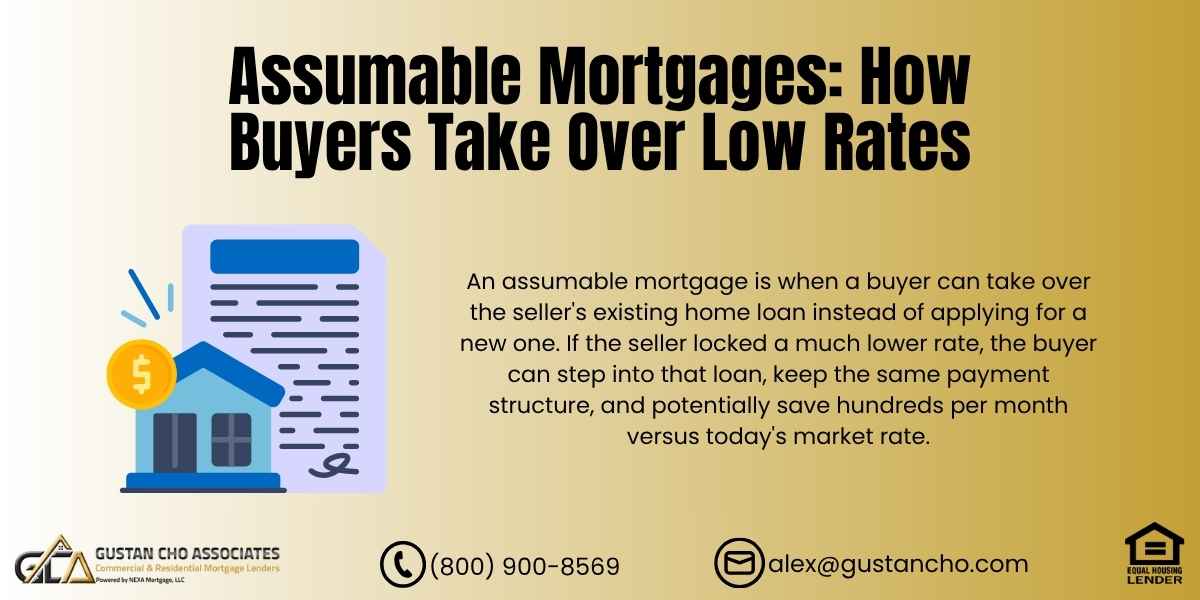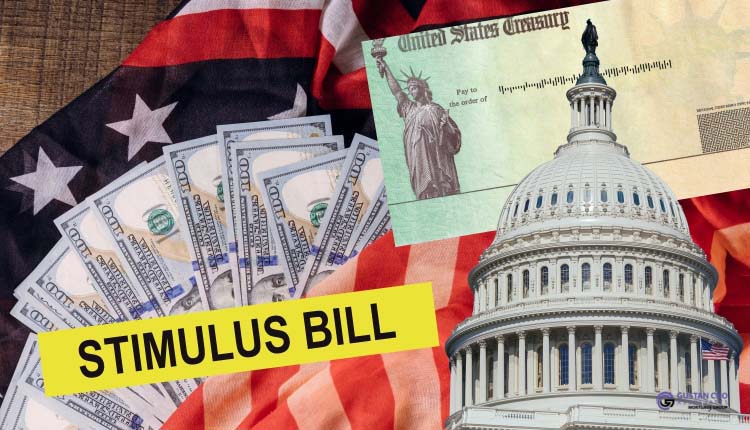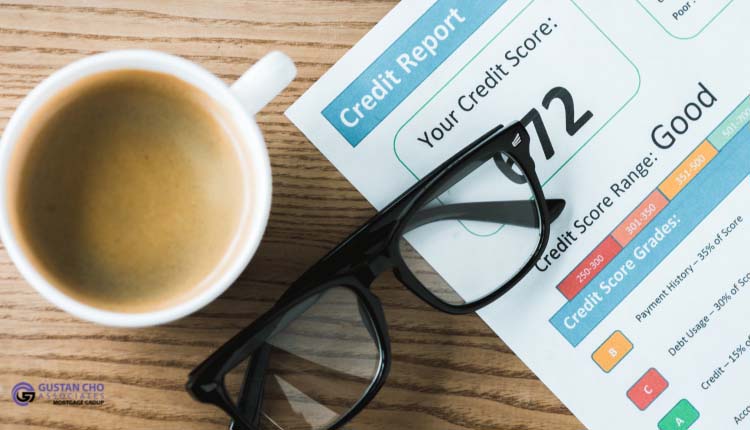In today’s housing market, every little bit counts when it comes to mortgage rates. With interest rates way higher than they were just a few years back, homebuyers are getting creative to keep their monthly payments down and afford more home. One great—yet often overlooked—option is an assumable mortgage.
An assumable mortgage lets a buyer take over the seller’s existing loan, including the same interest rate, balance, and remaining term. This can mean snagging a loan with a much lower interest rate than what’s out there right now. While not all loans are assumable, they can offer real perks for buyers and sellers if done right. Before we get into the nitty-gritty, let’s review the key things you should know.
Key Takeaways
- Assumable mortgages let a buyer take over the seller’s existing loan—same rate, same balance, same remaining term.
- Most common: FHA, VA, and USDA loans (with lender/agency approval). Conventional loans are usually not assumable.
- Buyers still must qualify. Equity beyond the loan balance is covered by cash or secondary financing.
- Great when market rates are higher than the seller’s rate; less helpful when today’s rates are lower.
Watch the fees, timelines, VA entitlement rules, and due-on-sale clauses.
What Is an Assumable Mortgage?
An assumable mortgage is when a buyer can take over the seller’s existing home loan instead of applying for a new one. If the seller locked a much lower rate, the buyer can step into that loan, keep the same payment structure, and potentially save hundreds per month versus today’s market rate. The buyer still completes a full approval—this is not a shortcut around underwriting.
Using assumable mortgages is powerful in a high-rate market because you’re not starting from scratch, but inheriting a cheaper loan.
Assumable Mortgages Made Simple
Not all loans are assumable, but FHA, VA, and USDA often are. Our team helps you find and qualify for the best options.
Which Loans Are Assumable in 2025?
Not all loans can be assumed. Here’s the quick breakdown:
FHA Loans (Most Common)
FHA loans are among the most common types of mortgage options available. A buyer can generally assume them with credit-qualifying approval from the servicer. When a buyer assumes an FHA loan, they take on the same interest rate and the remaining term of the mortgage. The standard FHA underwriting criteria, including income assessments, debt-to-income ratio, credit history, and occupancy, still apply in these situations.
VA Loans
VA loans can be assumable with the necessary approval from the lender and the VA. It’s crucial to note that if a non-veteran assumes the loan and the VA does not approve a substitution of entitlement, the veteran seller’s entitlement may remain linked to the loan until it is fully paid or refinanced. Therefore, it’s important to always discuss the release of entitlement when considering such a transaction.
USDA Loans
USDA loans can be assumed with the necessary approval from the USDA, as long as they meet rural eligibility criteria. It’s important to note that income and property eligibility are crucial in this process.
Conventional Loans
Conventional loans usually come with due-on-sale clauses, which means they’re not typically assumable. But there are some exceptions to this. For instance, certain adjustable-rate mortgages (ARMs) or portfolio loans might let you assume the loan if the promissory note says explicitly so. It’s super important to check the promissory note carefully to get the details on the assumption.
If you’re unsure whether a specific loan is assumable, ask the servicer for written confirmation.
How an Assumption Works: Steps & Timeline
Step 1: Confirm Assumability
The seller requests a written statement from the servicer that the loan is assumable and asks for the assumption packet (requirements, forms, and fee list).
Step 2: Buyer Pre-Qualification
In the pre-qualification process, the buyer is assessed to ensure they meet the requirements for making payments on the existing loan based on the current program rules, such as FHA, VA, or USDA. During this stage, it’s also important to discuss strategies for addressing the seller’s equity, including options like using cash or exploring the possibility of secondary financing if permitted.
Step 3: Submit the Assumption Package
In Step 3 of the process, the buyer must submit the Assumption Package, which includes their income, assets, and credit documents. Once these are provided, the servicer reviews the buyer’s capacity, creditworthiness, and occupancy status. Concurrently, the title is opened, and the necessary figures for payoff and assumptions are ordered.
Step 4: Equity & Closing Structure
In Step 4 of the process, known as Equity & Closing Structure, the buyer must cover the difference through cash or alternative financing options if the purchase price exceeds the loan balance. Additionally, the escrows will be adjusted for taxes and insurance, and it may be necessary to establish impounds.
Step 5: Final Approval & Transfer
In the final step of the process, the buyer signs the assumption agreement and the necessary closing documents. Following this, the servicer updates the loan to reflect the buyer’s name, and the title is officially transferred to the buyer. For VA loans, it’s important to confirm entitlement handling in writing. Typically, this entire process takes about 30 to 60 days, although the timeline can vary depending on specific circumstances.
Typical Timeline: Often 30–60 days, but can vary by servicer responsiveness and title work.
What Does an Assumption Cost?
Expect a mix of servicer processing fees, credit report, title/escrow, recording, and standard settlement costs.
- VA and FHA may have program-specific fee rules; servicer fees vary.
- If a substitution of entitlement is requested on VA loans, confirm any additional steps/costs.
- The budget includes any down payment needed to bridge the seller’s equity.
The bottom line is that while you’ll pay normal closing costs, you may save far more over time thanks to the lower inherited rate—the core value of assumable mortgages.
Save Money With an Assumable Mortgage
Why start fresh at a higher rate? With an assumable mortgage, you can step into affordable monthly payments immediately.
Seller Benefits of Assumable Mortgages
- Bigger buyer pool: Your low-rate loan is a selling feature.
- Potentially higher net price: Buyers may pay more for the home to access the low rate.
- Faster contract acceptance: Assumptions can make your listing stand out in a high-rate market.
- Negotiation leverage: Buyers may choose the assumption path for monthly savings if offers are similar.
Tip: Put “Assumable FHA/VA/USDA loan—low rate” in your listing remarks (verify with servicer first) and include an assumption info sheet at showings.
Risks, Limits & Fine Print
- Qualification still required: Buyers must fully qualify. Assumable mortgages are not “no-doc.”
- Equity gap: If the seller has significant equity, the buyer must bring cash or arrange a second lien (if allowed) at a higher rate.
- Servicer control & timeline: You’re on the servicer’s clock. Delays can happen.
- Due-on-sale: Conventional loans with due-on-sale clauses are typically not assumable. Don’t risk a “subject-to” transfer without legal guidance.
- VA entitlement: If a non-veteran assumes without substitution of entitlement, the seller’s entitlement can remain tied up—impacting the seller’s future VA loan options. Get written clarity.
- Escrow shortages/true-ups: Expect escrow adjustments post-closing if taxes/insurance changed.
When rates fall: Starting a new loan could be better if market rates drop below the assumed rate.
Quick Math: When Does an Assumption Win?
- If the seller’s rate is meaningfully lower (e.g., 2–4% below today’s market), the monthly savings can be substantial—even after paying closing costs and an equity bridge.
- If the gap is small, compare the assumption to:
- Temporary buydowns (2-1 or 3-2-1),
- Permanent points, or
- Seller-paid rate buydowns on a new loan.
Assumable mortgages shine when the rate spread is large and the equity bridge is manageable.
Case Studies (Real-World Scenarios)
Case 1: FHA Assumption Saves $540/Month
In Case 1, a buyer benefits significantly from assuming a seller’s FHA loan at a low interest rate of 2.75%, with a remaining balance of $305,000 and 27 years left on the term. The home is priced at $365,000, and the buyer contributes $60,000 to cover both the seller’s equity and closing costs. With the current market rate at 6.75%, the buyer saves approximately $540 per month by inheriting the advantageous 2.75% rate instead of obtaining a new loan at the higher market rate. This savings means that the costs incurred in the transaction will be paid back in less than a year.
Case 2: VA Assumption with Entitlement Release
In Case 2, a veteran seller with a VA loan at an interest rate of 2.50% is looking to sell the property to another veteran buyer. The lender and VA approve the assumption of the loan with a substitution of entitlement, which allows the seller’s VA entitlement to be restored. This arrangement not only benefits the buyer by providing access to a low interest rate but also results in the home being sold for a price above comparable properties due to the advantageous payment terms.
Case 3: USDA Assumption in Rural Market
In case 3, we have a USDA loan with a modest balance and an interest rate of 3.00%. The buyer meets the income limits set by USDA, and the property remains eligible for the program.
Servicer approves assumption; buyer uses gift funds for equity gap, and the monthly payment beats renting.
Assumable Mortgages vs. Alternatives
Assumable Mortgages
- Pros: Keep seller’s low rate, smaller payment, long-term savings.
- Cons: Equity bridge is needed; servicer timeline is limited to FHA/VA/USDA/rare conventional cases.
Temporary Buydowns (2-1, 3-2-1)
- Pros: Lower initial payments and easier seller concession structure.
- Cons: The rate resets higher later, which is not the same as keeping a low rate for the full term.
Permanent Points / Seller Credits
- Pros: Reduces your new loan rate; flexible.
- Cons: Often can’t match the super-low legacy rates of 2020–2022 loans.
How We Help at Gustan Cho Associates
- We confirm if the loan is assumable and manage the assumption package with the servicer.
- We structure the equity bridge (cash or eligible secondary financing).
- For VA deals, we coordinate entitlement questions so sellers aren’t stuck.
- If the assumption isn’t optimal, we model assumable mortgages vs buydowns vs points so you choose the best path.
👉 Call Gustan Cho Associates at 800-900-8569 or visit GustanCho.com to review your assumption options today.
Final Word
When market rates are high, assumable mortgages can be the cheapest payment in town. The key is confirming assumability, planning the equity bridge, and watching the fine print—especially on VA entitlement. If the numbers pencil out, the savings can be massive.
Frequently Asked Questions About Assumable Mortgages:
Q: What are Assumable Mortgages?
A: Assumable mortgages let a buyer take over the seller’s existing loan—including the same rate, balance, and term—rather than starting a brand-new mortgage.
Q: Which Loans are Typically Assumable?
A: FHA, VA, and USDA loans are usually assumable (with lender/agency approval). Conventional loans usually are not, except in rare cases like certain ARMs or portfolio loans.
Q: Why are Assumable Mortgages Valuable in 2025?
A: With today’s higher interest rates, buyers can save hundreds per month by inheriting a seller’s lower-rate loan. Sellers benefit too, since it makes their property more attractive.
Q: Do Buyers Still Need to Qualify for an Assumption?
A: Yes. Buyers must meet full underwriting standards—credit, income, debt ratios, and occupancy—like a new mortgage.
Q: How Long Does a Mortgage Assumption Take?
A: It usually takes about 30 to 60 days, but it can vary based on the lender and the title stuff being done.
Q: What are the Costs of Assumable Mortgages?
A: Buyers pay standard closing costs (title, escrow, and recording) plus servicer processing fees. They may also need cash or secondary financing to cover the seller’s equity.
Q: How do VA Assumable Mortgages Work with Entitlement?
A: If a non-veteran assumes without a substitution of entitlement, the seller’s VA entitlement stays tied up until the loan is repaid. Always confirm release of entitlement in writing.
Q: Can USDA Loans be Assumed?
A: Yes—if the buyer meets USDA income requirements and the property remains in an eligible rural area.
Q: What are the Biggest Risks of Assumable Mortgages?
A: Possible risks include equity gaps that require large cash outlays, servicer delays, due-on-sale clauses on conventional loans, and escrow adjustments after closing.
Q: How do I Know if a Specific Loan is Assumable?
A: Ask the servicer for written confirmation and request the official assumption packet that lists requirements, fees, and timelines.
Don’t Wait—Secure a Low Rate With an Assumable Loan
Assumable mortgages are rare opportunities in today’s market. Let our experts help you lock in lower payments now.









